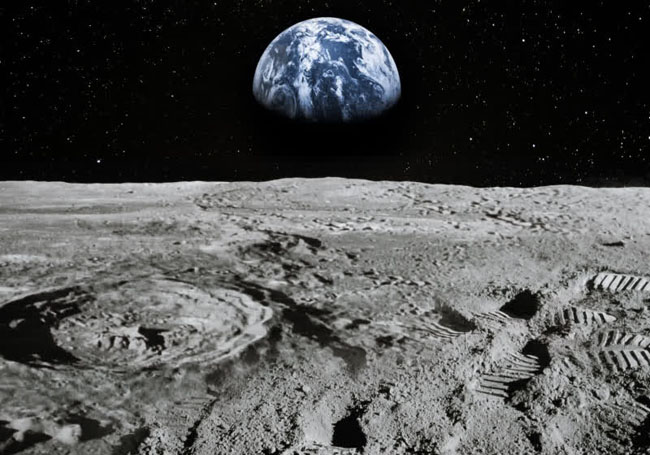New York … News Time
The US space agency NASA has confirmed for the first time that water is also present in the part of the moon exposed to sunlight and it is not limited to cold and shady areas. According to a statement issued by NASA, the Stratospheric Observatory for Infrared Astronomy (SOFIA) made the discovery. The observatory discovered water molecules (H2O) molecules H2O on Earth in the moon’s face, Clavius Crater, located at the moon’s South Pole. Earlier, some forms of hydrogen were discovered on the surface of the moon, but no distinction could be made between water and its closely related chemical, hydroxyl OH. Data from this location reveals that there is 100 to 412 parts per million of water that is spread over the surface of the entire moon. The findings were published in the journal Nature Astronomy.
“We got h2O signals,” said Paul Hertz, director of NASA’s Astrophysics Division. That it may be in the direction of the sun facing the moon, But now that we know it exists, this discovery will challenge our understanding of the moon’s surface and raise the question of whether we can use these resources to explore space. According to NASA, the amount of water discovered on the surface of the moon can be compared to the Sahara Desert, which contains 100 times more water. However, despite the small amount, the discovery raises the question of how water was created and maintained on the moon’s hard and airless surface. Needless to say, water is a valuable resource in the depths of space and is the most important component of life. It remains to be seen whether access to the water discovered on the moon will be easy to use. But NASA said that we are excited about the discovery of water because for the first time a woman and a man will be sent to the surface of the moon in 2024 under the Artemis program. When astronauts first landed on the moon in 1969, it was thought to be completely dry, but over the past 20 years, various missions have confirmed snow in dark pits in the moon’s Polar Regions.
During these missions, evidence of every hydration on the surface of the moon’s bright spots was discovered, but they could not identify whether it was H2O or OH2 or OH. “Before Sofia’s observations, we knew there was some kind of hydration on the moon, but we don’t know how much, and how many of these water molecules,” said Casey Honniball, head of the research team. Or something else ‘. During the study, a 106-inch diameter telescope with a Boeing 747SP jet liner provided a clear view of surface water vapor. Sofia made this amazing discovery in bright parts of the moon with the help of the Faint Object infrared camera. Casey Honniball said that water could be lost in space in bright parts of the moon without any atmosphere. But somehow we could see it, for some reason it made water and for some reason it got stuck there. Sofia flights will continue to find answers to these questions so that the first map of water resources for future human missions to the moon can be drawn. This issue of Nature Astronomy will also publish another study by NASA experts which states that this water may be trapped in small shaded areas where the temperature can reach up to minus Celsius the chain can extend to the full moon.
“Water is a valuable resource,” said Jacob Bleachere, chief scientist at NASA’s Human Exploration and Operations Mission Directorate. If we use the resources of the moon, we will have the opportunity to send less water and more equipment with the missions that will be sent, so that new scientific discoveries can be made.




